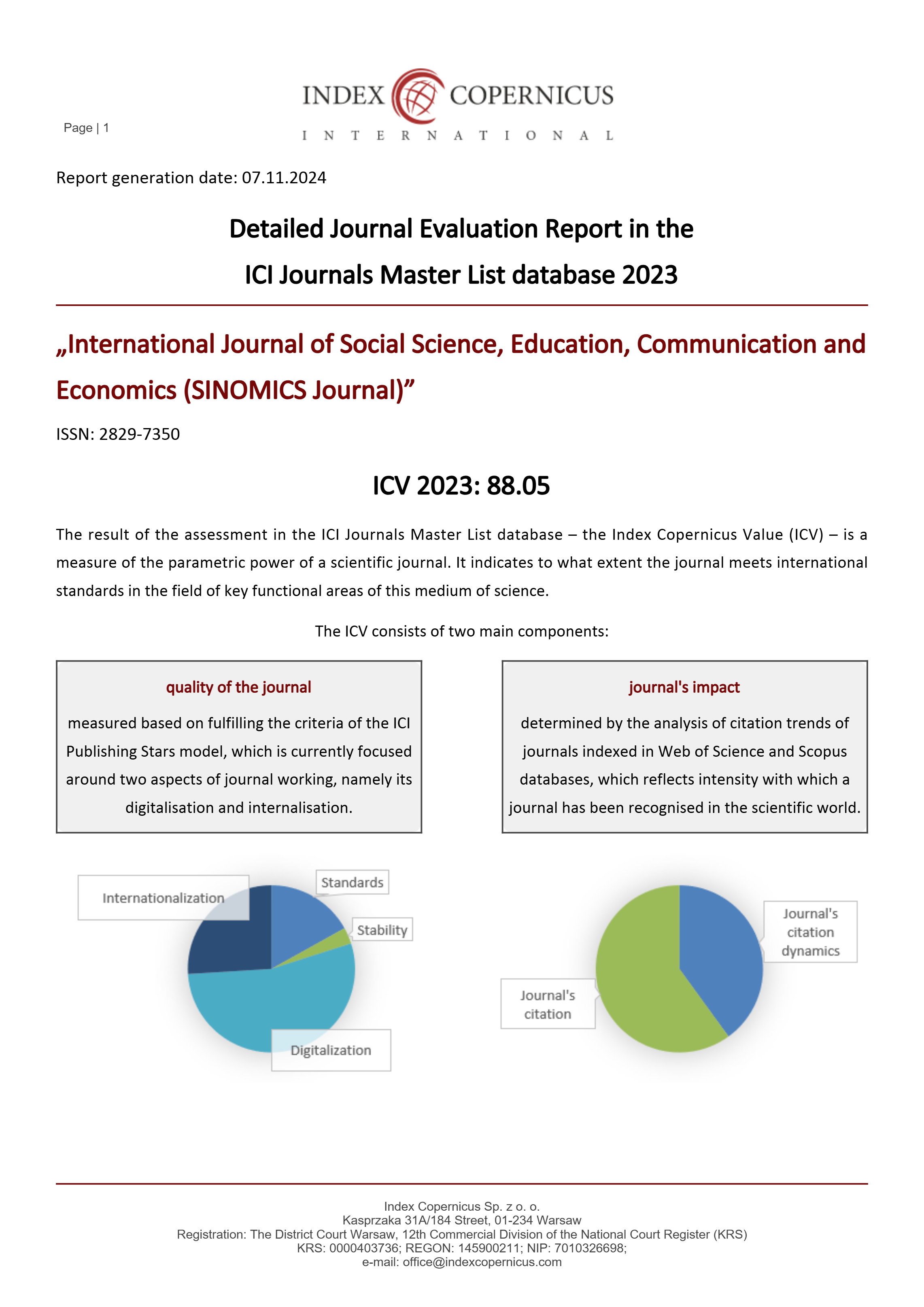Economic and Spatial Regional Integration and Its Impacts on Regional Development in North Tapanuli Regency
Main Article Content
Abdi Sugiarto
Rini Kustiah Ramadania
This research aimed to analyze and understand the impact of Economic and Spatial Regional Integration on Regional Development in North Tapanuli Regency. The data collection technique involved indirect observation, which included reading, collecting, and noting data, information, and their descriptions. The type of data used in this research was quantitative data in the form of secondary time series data. The data included Gross Regional Domestic Product (GRDP) data, geographic data, population figures, distances between regions, regional potential, and other data, sourced from the Central Statistics Agency (BPS) of North Sumatra Province, BPS and Regional Development Planning Agency (BAPPEDA) of North Tapanuli Regency, as well as online sources. The results of the analysis depict substantial GRDP growth and growth rates in both sub-districts: Siborong borong Sub-district with an index value of 184,495,189 and Simangumban Sub-district with an index value of 19,632,902. The analysis also demonstrated consistent and integrated growth across each sub-district and the regency in North Tapanuli. The Gravity Model revealed that North Tapanuli Regency had a strong attraction to its supporting areas, influenced by distance and interactions. The Williamson Index measures income inequality between regions, with results nearing 0, indicating economic equalization between the growth center and its supporting areas. In regional development, the role of North Tapanuli Regency as a growth center contributes to driving economic growth and the welfare of the surrounding communities.
Ali, M. J., & vashney, D. (2013). Spatial Modelling of Urban Growth and Urban Influence: Approach of Regional Development in Developing Economy. Sage Journal, 3(2). https://doi.org/10.1177/0975425312473225
Arsad, L. (2000). Pengantar Perencanaan dan Pembangunan Ekonomi Daerah. BPFE,.
Chapple, & Monteno. (2016). From learning to fragile governance: Regional economic development in rural Peru. Jourmal of Rural Study, 44. https://doi.org/10.1016/j.jrurstud.2016.01.009
Duran, Hasan E. (2019). Asymmetries in regional development: Does TFP or capital accumulation matter for spatial inequalities? The Journal of Economic Asymmetries, 20. https://doi.org/10.1016/j.jeca.2019.e00119
Fifi, F., Harimuddin, J., Restele, L. O., & Fitriani, F. (2021). Identifikasi Pusat Pertumbuhan dan Wilayah Pendukungnya dalam Pengembangan Wilayah Kota Kendari. JAGAT (Jurnal Geografi Aplikasi dan Teknologi), 5(2), 118. https://doi.org/10.33772/jagat.v5i2.21509
Ghozali. (2018). Aplikasi Analisis Multivariate dengan Program IBM SPSS 25. Badan Penerbit Universitas Diponegoro.
Ghozali & Latan. (2015). Konsep, Teknik, Aplikasi Menggunakan Smart PLS 3.0 Untuk Penelitian Empiris. BP Undip. SemarangHarnanto. 2017. Akuntansi Biaya: Sistem Biaya Historis. BPFE.
Hailudin, H., Diswandi, D., & Suriadi, I. (2020). Integrasi Wilayah Secara Ekonomi Dan Spacial Serta Dampaknya Terhadap Pembangunan Daerah Di Lombok Barat NTB. Elastisitas - Jurnal Ekonomi Pembangunan, 2(1), 53–61. https://doi.org/10.29303/e-jep.v2i1.20
Hendarto, M. (2014). Makalah Ekonomi Pengembangan Regional. Jurusan Ilmu Ekonomi Dan Studi Pembangunan, Fakultas Ekonomi Universitas Diponegoro, Semarang.
Jin, C., Xu, J., & Huang, Z. (2019). Spatiotemporal analysis of regional tourism development: A semiparametric Geographically Weighted Regression model approach. Habitat International, 87. https://doi.org/10.1016/j.habitatint.2019.03.011
Nischalke, T., & Schöllmann, A. (2005). Regional development and regional innovation policy in New Zealand: Issues and tensions in a small remote country1. European Planning Studies, 13, 559–579. https://doi.org/10.1080/09654310500107217
Rahardjo. (2005). Dasar-Dasar Ekonomi Wilayah. Graha Ilmu. Grahana Ilmu.
Tarigan. (2005). Ekonomi Regional Teori dan Aplikasi. Bumi Aksara.










